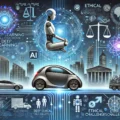What is Generative Artificial Intelligence (GenAI)?
Imagine a world where machines can create art, write stories, generate images, or even compose music—without human intervention. That’s the essence of generative artificial intelligence (GenAI). GenAI uses advanced algorithms to learn from vast amounts of data and then generates new content that mimics the patterns it has learned. This technology is revolutionizing industries by automating creative processes and enhancing productivity.
The Evolution of GenAI
GenAI’s journey began long before the digital age, with early pioneers like Maillardet’s automaton in the 18th century. However, it wasn’t until the late 2000s that deep learning and neural networks started making significant strides. The Transformer network, introduced in 2017, paved the way for models like GPT-1 and GPT-2, which could generate text without human supervision.
Key Players and Breakthroughs
The landscape of GenAI is dominated by giants like OpenAI, Microsoft, Google, and Baidu. These companies have been at the forefront of developing large language models (LLMs) that can generate text, images, audio, and even video. In 2021, DALL-E, Midjourney, and Stable Diffusion emerged, offering high-quality AI-generated art from natural language prompts. ChatGPT popularized generative AI for general-purpose tasks in 2022, followed by the release of GPT-4 in 2023, which some argue is an early example of an artificial general intelligence (AGI) system.
Applications Across Industries
The applications of GenAI are vast and varied. From chatbots to image generation systems, these models can be used in everything from creating personalized content for marketing campaigns to generating 3D models for product design. For instance, GPT-4 can generate both text and images, while Imagen specializes in producing high-quality visual art.
Advantages and Challenges
The advantages of GenAI are numerous. It can automate repetitive tasks, enhance creativity, and even assist in scientific research. However, there are also significant challenges. Concerns about misuse include cybercrime, fake news, deepfakes, and job replacement. Ethical considerations arise when dealing with issues like bias, privacy, and copyright infringement.
Environmental Impact
The training of these models requires enormous computing power, leading to significant environmental concerns. High CO2 emissions, large amounts of freshwater usage, and high electricity consumption are just some of the issues that need addressing. Efforts to mitigate this include increasing efficiency, building more efficient machine learning models, and regulating transparency.
Regulation and Ethical Considerations
As GenAI continues to evolve, so do the regulations surrounding it. Governments around the world are grappling with how to manage the ethical implications of this technology. For instance, the European Union’s proposed Artificial Intelligence Act requires disclosure of copyrighted material used in training generative AI systems and labeling of AI-generated output.
Conclusion
The future of GenAI is both exciting and complex. While it holds immense potential for good, it also poses significant challenges that need to be addressed. As we continue to develop these technologies, the key will be striking a balance between innovation and responsibility.

You want to know more about Generative artificial intelligence?
This page is based on the article Generative artificial intelligence published in Wikipedia (retrieved on December 13, 2024) and was automatically summarized using artificial intelligence.







